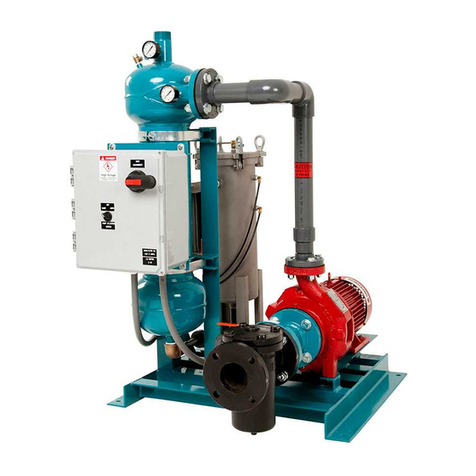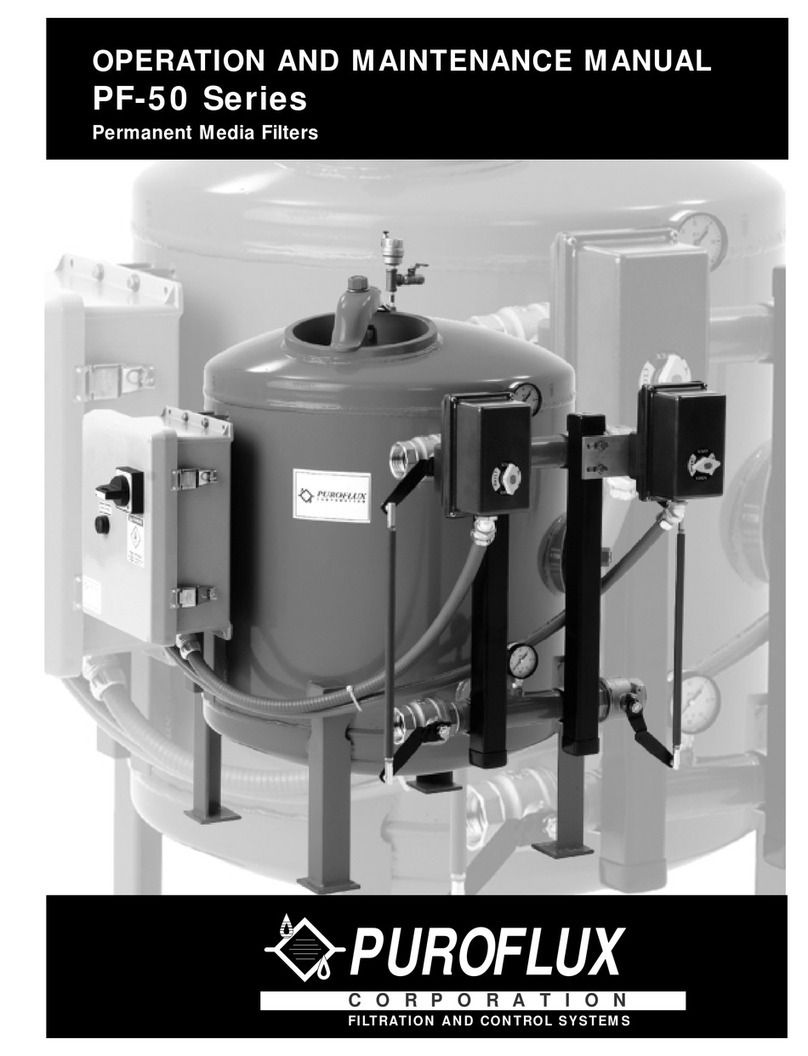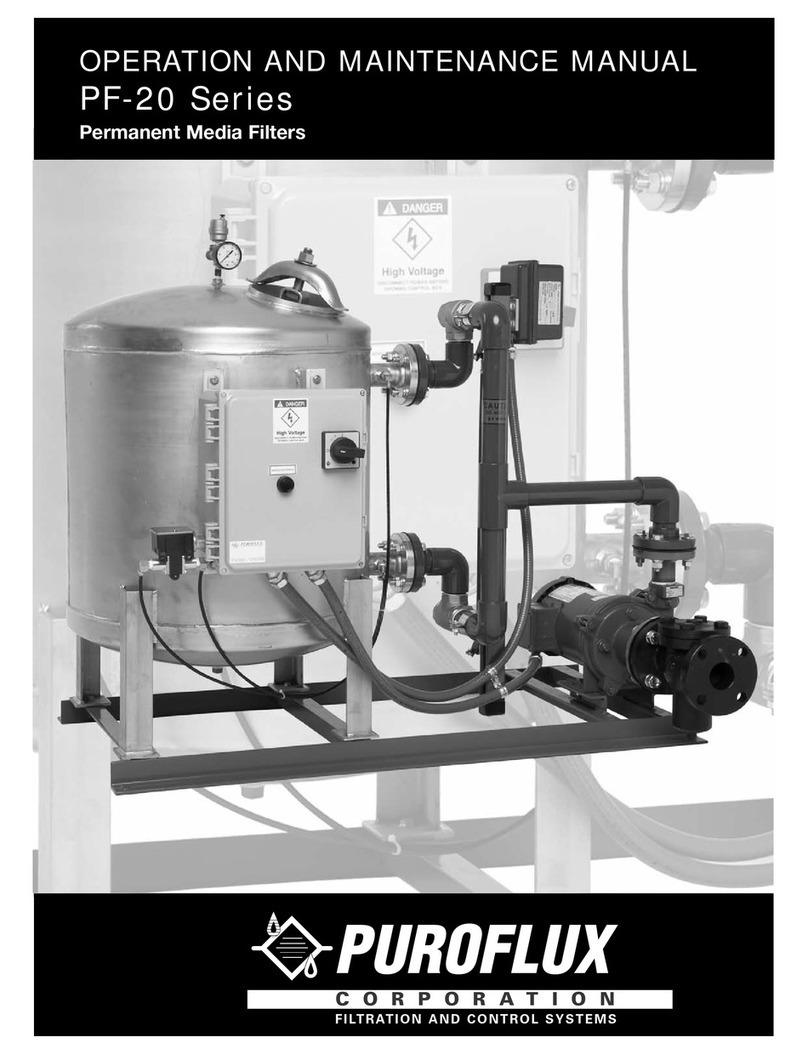
PUROFLUX CORPORATION
PAGE # 6 PF-30 Series Filter (ver. 8/10)
PUROFLUX CORPORATION
PIPING INTERFACE CONNECTIONS
The filter piping should be installed as follows:
1. Installation of interconnecting piping
• When mating interconnecting fittings to the filter unit make sure that filter components are securely
held in place so no damage or leaks occur.
• If welding or soldering mating flanges or fittings make sure not to overheat filter components.
Overheating filter components can cause damage or leaks.
• If welding DO NOT use the filter or its components as a ground.
2. Refer to Table ll below for piping connection sizes.
NOTE: Do not reduce the pipe sizes listed, the pipe sizes are minimums. If long runs, excess fittings, or
lifts are necessary, it is recommended to enlarge the pipe diameter in order to reduce friction loss. Never
reduce the waste line; this can restrict the flow of the backwash cycle and reduce efficiency.
3. Run an influent line from the system sump to the pump pre-strainer labeled "INLET". A service valve
and union should be installed in this line near the filter. Refer to specification drawings.
NOTE: If the filter inlet connection is located above the process liquid operating level, a foot or check
valve must be installed below the water level to prevent loss of pump prime.
4. Run an effluent line from the filter return labeled "OUTLET" back to the system sump. A service valve
and union should be installed in this line near the filter. Refer to specification drawings.
5. Run a waste line from the filter waste outlet labeled "WASTE" to the nearest sewer drain. Table III on
page 7 lists the minimum and maximum backwash flow rates and volumes for the PF-30 series. A union
should be installed in this line near the filter. Refer to specification drawings.
NOTE: Do not put any type of valve in the waste line! The sewer drain must be large enough to
handle and maintain the flow of the backwash cycle. If the drain is not large enough to support the
volume of waste generated during a backwash cycle, it may be necessary to use a reservoir tank to
collect the waste water. The flow from the reservoir tank can then be regulated to the drain.
6. For filters utilizing a source other than the process system water for backwash supply, Table Ill on
page 7 shows the required backwash flow and volumes. The maximum backwash supply pressure for the
PF-30 filter is 40 psi. Run a line to the connection labeled "BACKWASH." If public or municipal water is
used for backwash, a backflow preventer is required in this line on all units. A service valve and union
should be installed in this line near the filter.
NOTE: Never overtighten service unions on the filter unit. Service unions should be hand tightened
only. Overtightening can cause damage, which may result in leaks.
NOTE: Always follow local, county, state or other government authorities requirements for piping
hook-ups.
TABLE II - PIPING CONNECTION SIZES - DIMENSIONS SHOWN IN INCHES
MODEL -PF30 INLET OUTLET WASTE BACKWASH
12 2 FLNG 1 FPT 1 FPT 1 FPT
18 2 FLNG 1 1/2 FPT 1 1/2 FPT 1 1/2 FPT
24 2 FLNG 1 1/2 FPT 1 1/2 FPT 1 1/2 FPT
30 3 FLNG 2 FPT 2 FPT 2 FPT
36 3 FLNG 2 1/2 FLNG 2 1/2 FLNG 2 1/2 FLNG
42 3 FLNG 3 FLNG 3 FLNG 3 FLNG
48 4 FLNG 4 FLNG 4 FLNG 4 FLNG































